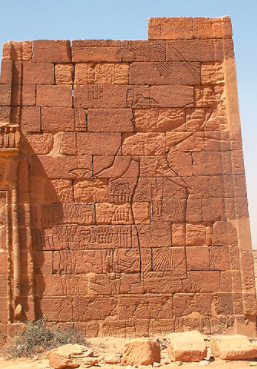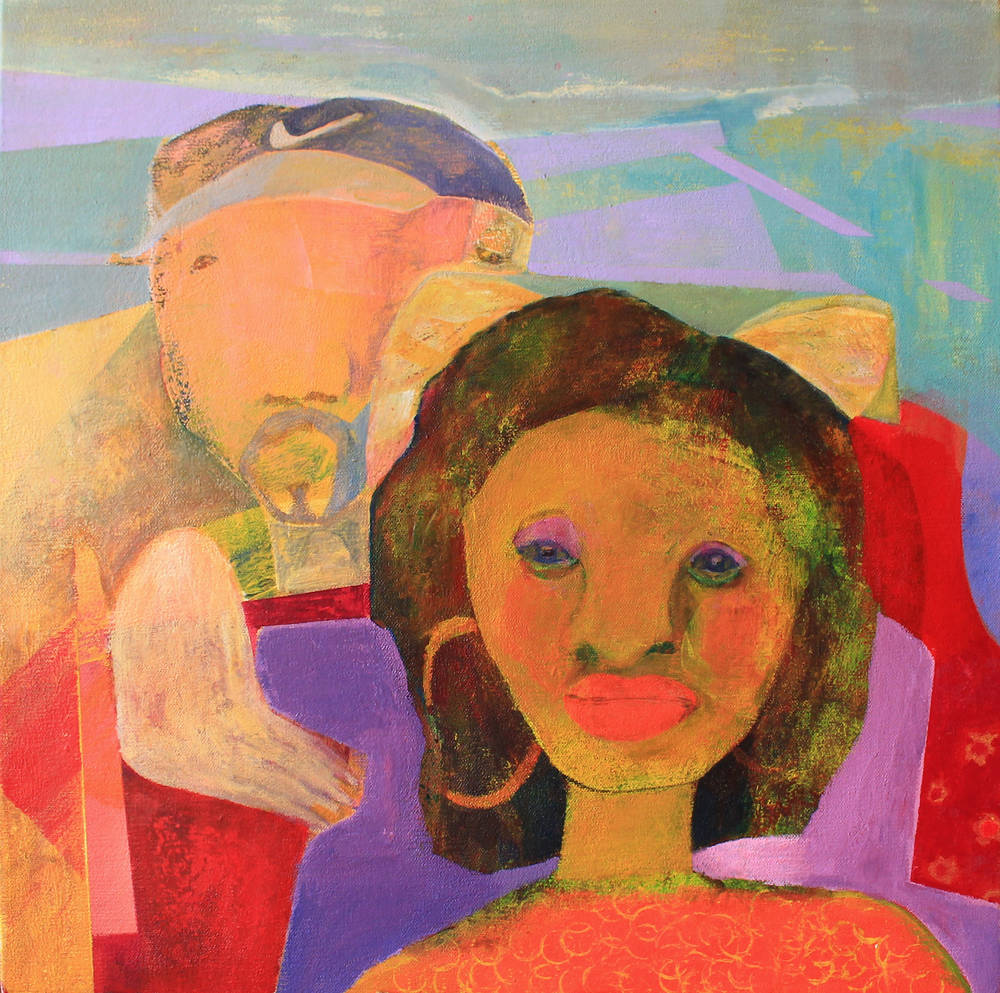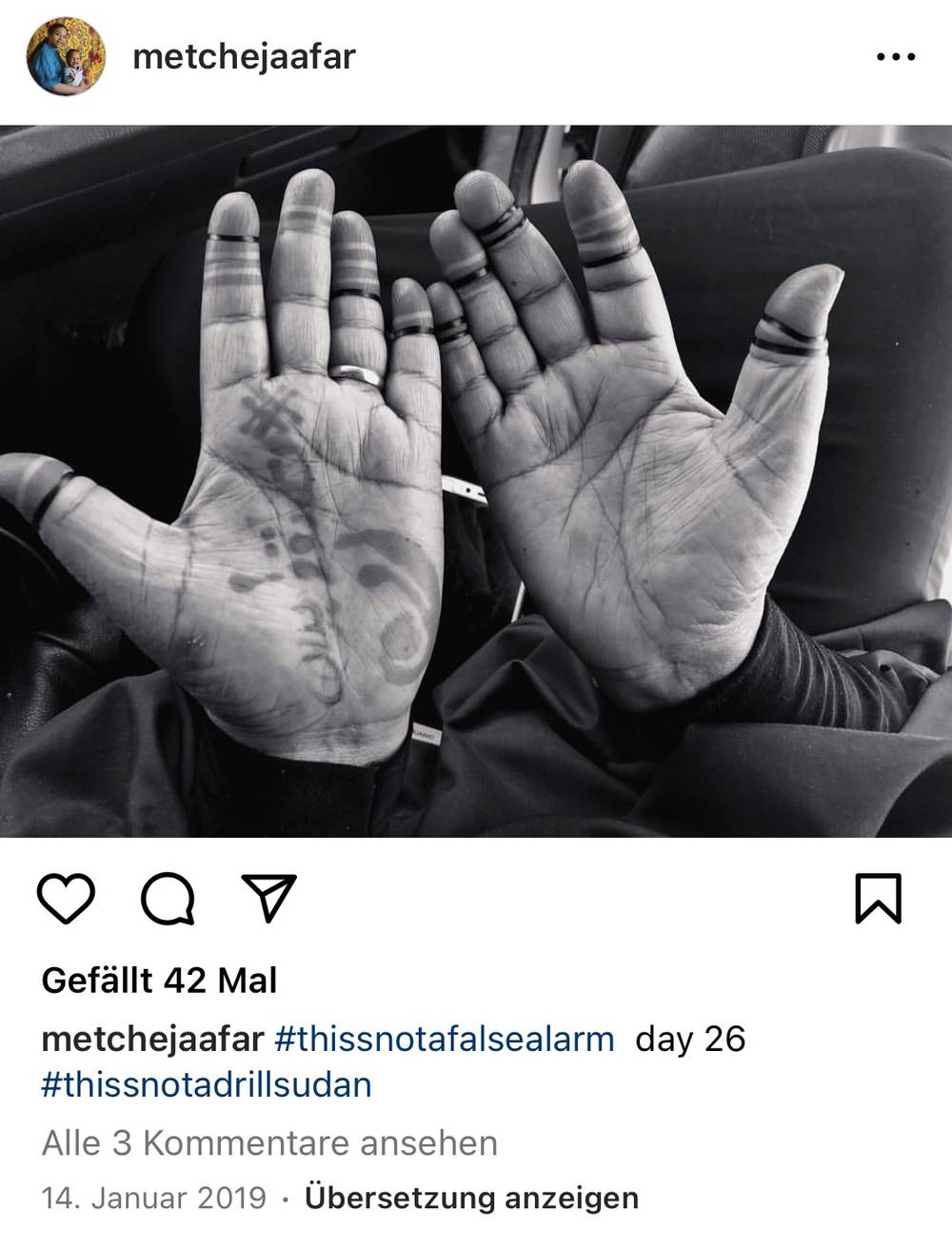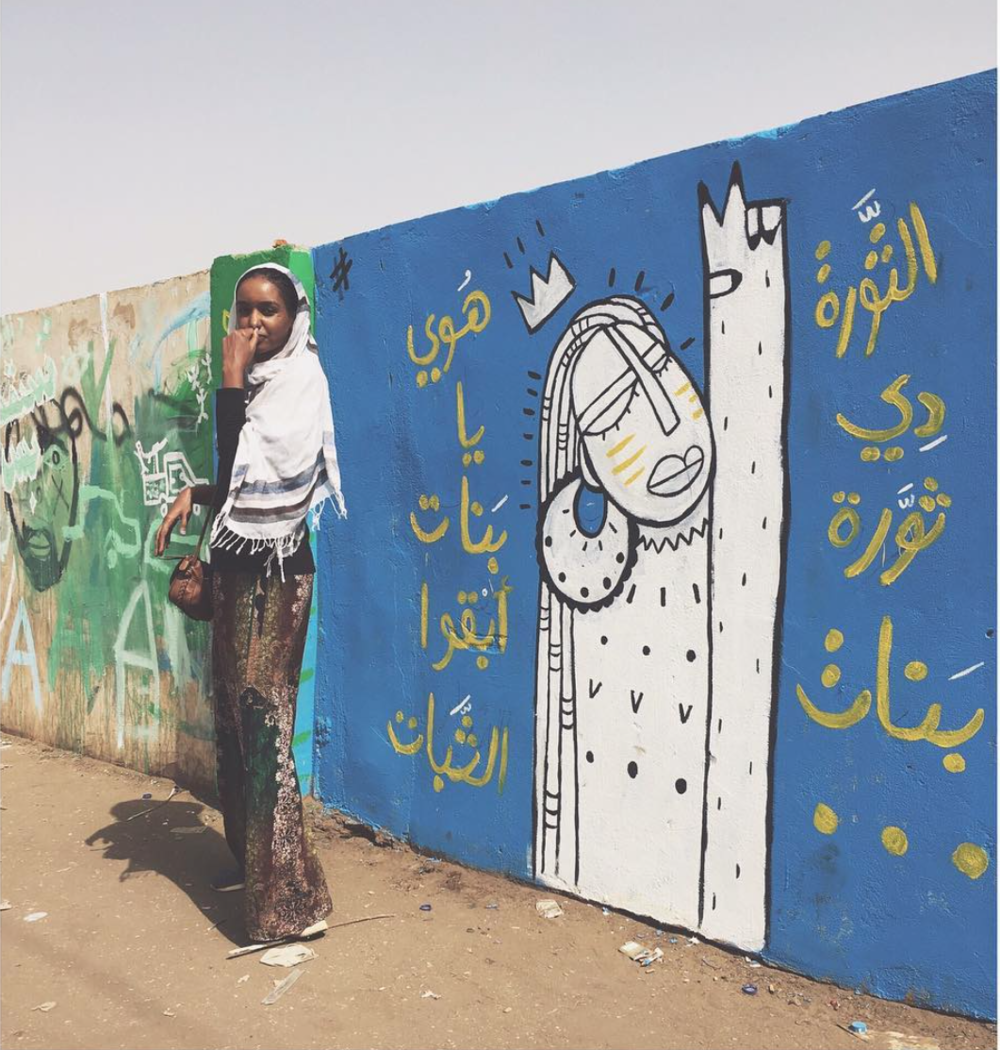In a regime that systematically discriminated against women for decades, civil resistance rose to unprecedented heights in 2019. The leading figures of this protest movement – and it persists to this day – are Sudanese women. And not for the first time, as it turns out.
In 2019, civil protests in Sudan made international headlines – largely thanks to one snapshot that became iconic. The picture showed one of the young female demonstrators, photographed during the three-month-long sit-in against the military dictatorship. The narrative of the feminist December Revolution in Sudan was born and went on to carve its way through the international press.
The photo, taken by Lana Haroun on April 8, 2019, shows then 22-year-old architecture student Alaa Salah and went viral within hours. In the photo, she is standing on the roof of a car with her index finger raised as she recites a poem. She is surrounded by a protesting crowd of people cheering her on, filming her, on the brink of ending dictator Omar El Bashir’s 30-year grip on power without resorting to violence. His regime had systematically discriminated against women and pushed them out of important roles. In this historic moment, Salah wears a toub – a white cloth more than four meters long that covers her body from head to toe with a wrapping technique that first appeared in the 19th century. On social media, European and U.S. users compared the photo to French painter Eugéne Delacroix’s portrait of Marianne and the Statue of Liberty in New York. Yet the scene also reveals a special Sudanese symbolism and tradition.

Alaa Salah during the sit-in on April 8, 2019 (c) Lana Haroun, Image via twitter.com
Historical symbols of female resistance
Women have assumed relevant leadership roles in the private and public realm throughout the long history of the territories that make up present-day Sudan, including in times of repression such as in 2019. The protest movements of the last century saw the emergence of one particular fashion: the white toub – as early as 1953, for example, during protests for Sudanese independence from British colonial rule. At that time, hundreds of women in the historic city of Omdurman protested in white toubs for their freedom and marched to the capital Khartoum with the slogan “Long live Sudan”.
During the more recent civil disobedience, women have repeatedly referenced such historical symbols, along with poems, slogans, and concepts that in some cases date back thousands of years. Activists such as Alaa Salah, who drew on the symbolism of the toub, were most notably referred to during the protests as “kandake” – an ancient title reserved for queens and royal mothers.

Relief with Amanirenas on the outer wall of a pyramid in Barwa, Sudan, Image via afrolegends.com
This Meroitic term refers to the royal women who gave birth to the pharaonic kings in what is now Sudan over 2,000 years ago and also ruled as matriarchs themselves. Perhaps best known is Amanirenas, who led an army of 30,000 in 25 BCE, repelling the Roman invasion and usurpation of her empire. Reliefs on the walls of temples show these queens in stately poses and tell their story.
Art as a tribute to the women of the revolution
During the December Revolution, women artists also used walls as a medium to spread their socio-political messages and celebrate the women of the revolution. Alaa Satir is one of the women artists whose works attracted attention near the military headquarters. After three decades of dictatorship, the sit-in became a place of utopian coexistence where art and culture flourished and social hierarchies were renegotiated. Satir’s mural features a black and white drawing of a woman wearing a typical bridal earring, which Salah is also wearing in the photograph. Beneath the photo, which the artist shared on April 11, 2019, she wrote the words that also appear on the wall: “Hey ladies, stand your ground, this is a woman’s revolution.”
Photographer Metche Ja’afar pursues another form of artistic resistance, documenting the ongoing protests to this day. Alongside graffiti and heavily armed security forces, she reveals how women turn their own bodies into canvases. At the beginning of the revolution, social media was abuzz with photos of women sporting henna tattoos that depicted slogans of the revolution and various symbols of resistance. Defying the danger of being arrested by the police and military, more and more demonstrators moved through the public space in this way. There seemed to be no limits to the creativity of the female resistance.
The painter Amna Elhassan, whose works are currently on display on the glass façade and on the second floor of the SCHIRN rotunda, was likewise profoundly affected by the long history and the protests that have continued since 2018. A conversation with Ahlam Khidir, who hails from her neighborhood, was an incisive experience for the artist. Khidir became known as the “Mother of the Revolution” after her son Ha’zaa Hassan was killed in a protest in 2013. It was after his death that she became politically active, networking with the young demonstrators. Deeply moved by what Khidir told her, Amna Elhassan also wanted to memorialize the women of the revolution and the demonstrators who had been killed. As the first African artist to shape the SCHIRN rotunda to her own ideas, she, too, is now making history.

Being surrounded by women who occupy leading positions, who speak out loudly and strongly in public, and who stand up against oppression: This is what defines her current artistic work. She portrays the resilience and self-assertion she encounters in everyday life and in special moments. As a lecturer of architecture at the University of Khartoum and witness of the ongoing protests for democracy against autocracy and military rule, the artist sees how brutal violence is used against the young demonstrators of her generation.
The massacre on June 3, 2019, which brutally ended the sit-in in which Alaa Salah, Alaa Satir, Metche Ja’afar, and also Amna Elhassan participated, cost more than a hundred lives. Many of them were young people, tea women and other peaceful activists whose lives were taken in the struggle for “freedom, peace, and justice” and whose bodies disappeared into the Nile. The artist dedicates her first large-scale installation in the rotunda to these people. With the site-specific work “December”, she creates a tribute to those people whose lives were abruptly ended.
AMNA ELHASSAN. DECONSTRUCTED BODIES – IN SEARCH OF HOME
November 4, 2022 – February 12, 2023











